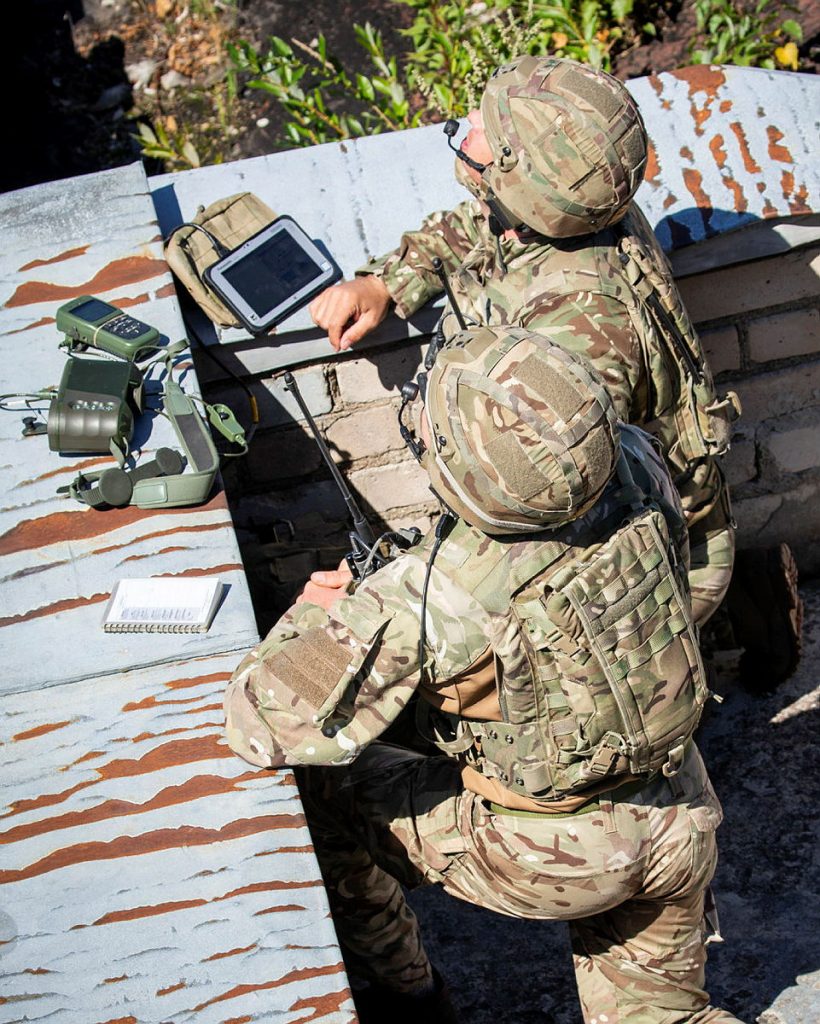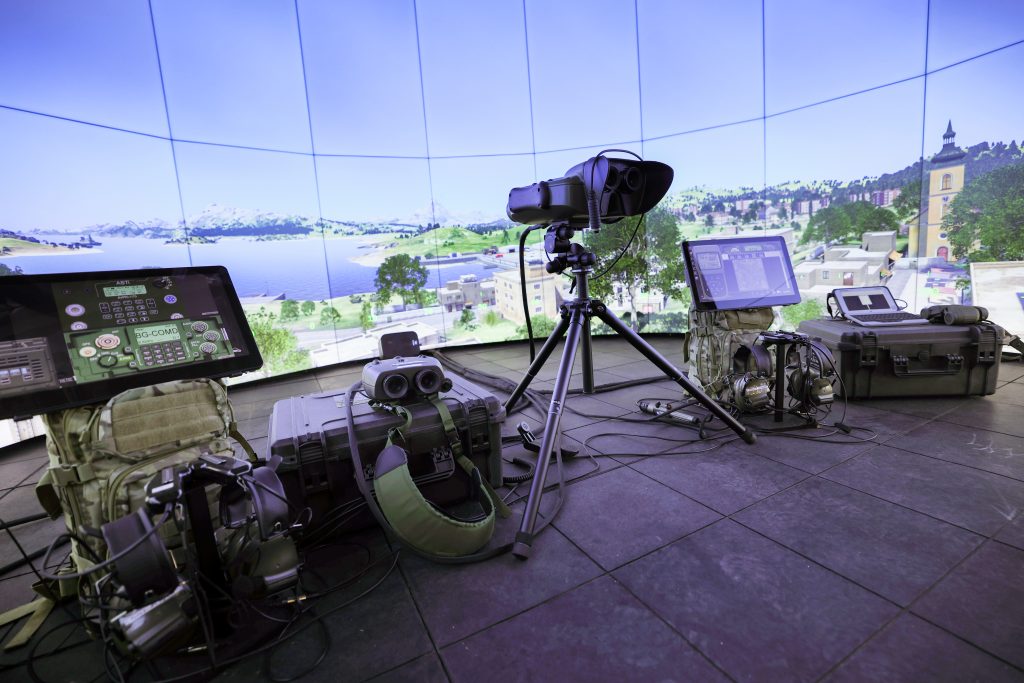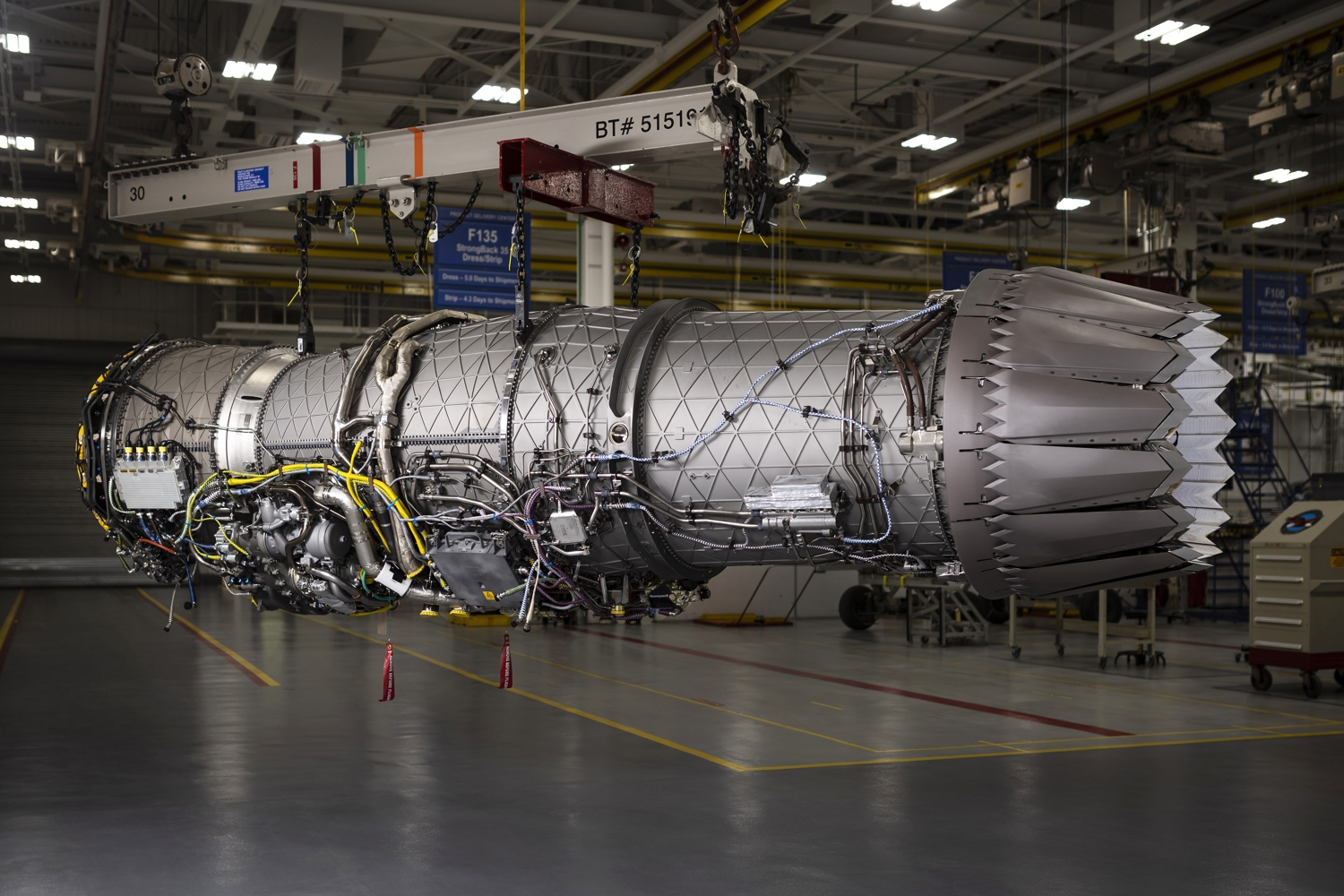Elbit Systems UK, putting the joint into the UK’s joint fires
Elbit Systems UK is a British subsidiary of the Israeli company with multiple entities under its umbrella. Calibre Defence was given the opportunity to visit an Elbit Systems UK facility to learn more about its role in the UK’s joint fires ecosystem.
When infantry go into battle, they will typically be supported by a range of assets providing fire support. These can vary depending on location from mortars, to close support aircraft, and even naval gunfire. Achieving this may sound simple in theory. On the face of it, a soldier should only need to pick up a radio and ask the appropriate person for what they want, and sometimes it is that simple. For everything else, however, the procedure requires the utmost precision. Most target coordinates gained by an observer using maps and binoculars will fall within some 200 m of the actual target, which would result in a poor outcome if airpower or naval gunfire were to be used, for instance. The whole process is also open to human error; a human would have to read out a ten-figure grid reference amongst all the noise of a battlefield, and the receiving pilot would have to hear it clearly and understand it. If the grid reference is misheard, the pilot might end up engaging the wrong location or even friendly units.
All of this becomes more complex when trying to coordinate joint fires. Put simply, weapons fired from land, air, or sea into the same battlespace, will need to be coordinated and deconflicted, often through different chains of command. For the UK, the tactical targeting element of this is done by Joint Terminal Attack Controllers (JTACs), which are integrated into Tactical Air Control Parties, which may then be organised into an element within a Fire Support Teams (FST). These combined units are typically generated by the soldiers from the Royal Artillery, RAF regiment, and armoured cavalry. The Royal Marines and Parachute Regiments also have their own JTACs, with specialist elements like a battery within the Commando artillery regiment that is the UK’s specialist unit in naval gunnery.
FSTs will be attached to an infantry or armoured formation or deploy ahead of them to conduct target acquisition ahead of when the infantry move into an area. They may also receive additional assets like mortar fire controllers and surveillance systems including radar. The British Army has initiated a sweeping modernisation of the equipment used by FSTs and Elbit Systems UK is the provider of most of those capabilities. Calibre Defence was given the opportunity to visit the Elbit Systems UK’s (ESUK) Horizon facility to test some of these systems and see how the company puts the joint into the UK’s joint fires.
Dismounted Joint Fires Integrator

The Dismounted Joint Fires Integrator from Elbit Systems UK is designed to be used by JTACs and FSTs, it facilitates calls for fire support from across the UK’s armed forces. Credit: ESUK.
The primary element provided by ESUK is the Dismounted Joint Fires Integrator (D-JFI). This is actually a suite of systems designed to help JTACs and FSTs better coordinate all of the assets available to them. There are two slightly different versions of the system, one that is specific to JTACs and another for FSTs. The FST version enables target coordinates to also be sent through FC-BISA, which is the digital fire control system used by the Royal Artillery.
The company was awarded the contract for the D-JFI in 2021 at a value of £100 million. The system completed its critical design review in September 2024 with system acceptance tests expected to follow shortly thereafter. Deliveries of the JTAC variant are expected to the British MoD throughout 2025, a company representative told Calibre Defence during the visit. Deliveries of the FST variant should follow in 2026.
The heart of the system is the AION-C, a day and thermal imaging system built in the UK with an integrated laser designator. It is fitted with its own GPS receiver and a magnetic compass as well as an inertial navigation unit. It is also paired with the Rattler XR laser designator with a range of 10 km that generates high quality designations. Individually, either system can generate good quality coordinates, but together they provide very high certainty, the company explained. The kit also has the Rattler H, which is a handheld laser target marker that provides coordinates in a suitable format for 9-line briefings. A “9-line” is a standardised format that is used to pass targeting information to a fire support asset. It provides information like the location of the weapon system in relation to the target, target coordinates and description, the position of friendly forces and the desired weapons or effects. Transmitting this information can open the fire support process up to errors, which the D-JFI aims to reduce or eliminate through a digital fire control system called Torch-X.
The imager and laser rangefinders are linked to an Elbit SmartHub, which is essentially a small tablet computer carrying the Torch-X software. It was originally developed by Elbit Systems and then further developed by Elbit Systems UK. The tablet provides the user interface for the system and is used to control and operate the optics and rangefinder. It enables the operator to automatically slew the optics to a sector in response to information received from another battlefield element from a top-down map and then switch to the view provided by the imager.
Once a target has been identified, the operator can generate a 9-line, which the system will partially populate, and then select from a close air support menu. If the D-JFI was plugged into a radio then they would use the variable message format to send information digitally, direct to the aircraft including the ability to share that information with its onboard weapon systems. At that point, the pilot would inspect and accept the information if correct. This functionality also means that the user can send data via Link16 which provides higher fidelity. The whole process to complete a 9-line takes around 30 seconds.
The AION-C with its integrated Rattler laser rangefinder is integrated onto a motorised tripod that includes its own GPS. The whole system can be remotely operated through 3 m cable allowing the team to observe from the tablet. It’s possible to take a snapshot or video of a target and send it to a command post over the radio net. This would enable them to operate from a hide or trench, separate from the system. This is quite normal for an FST or JTAC, but they would typically have the optical system in the hide with them.
Ground based surveillance radar

British Army JTACs training at Kazlu Ruda training ranges in Lithuania on Exercise FURIOUS WOLF in 2020. Credit: Crown Copyright/Cpl Nicholas Egan.
An FST may deploy with the Man-portable Surveillance and Target Acquisition Radar (MSTAR), which entered service in 1991 under an accelerated schedule for the Gulf War. That system is also being replaced under a contract also awarded to Elbit Systems UK for £14 million in 2023. The requirement was for a system that could replace MSTAR, operate 24/7 and that could fit within FSTs.
ESUK worked with another Elbit subsidiary, Pro Patria from Hungary with some changes made for the UK. The tripod carrying the radar is from Instro Precision, which is a subsidiary of ESUK. A grid tab has been added, meaning some changes to the software. Over 300 of the radars are in service with other NATO allies, the ESUK team explained, adding that the British Army contract included 90 radars with a further 15 ordered at a later date. Delivery is expected soon, although exact dates were not provided.
The radar head weighs 14kg and is attached to a 5 kg rotator and tripod. It will detect targets up to 40km and the Doppler element can be used for acoustic detection. This means that the radar can effectively detect the movement of people patrolling through brushes or long grass, for example, which produces a certain Doppler shift (a change in the frequency of the radar caused by movement). Although, this would require a very skilled operator, the company representative explained. This capability would be particularly useful for observing dead ground where the line of sight of the radar waves might be obscured. Outside of infantry, the radar can detect a tank at 25 km. There is also a mode on the control tablet that enables the operator to remove ground clutter.
The radar uses a frequency modulated continuous wave, which means that it is emitting all of the time that it is turned on. This means that when it hits something, the return will be a different frequency giving both range and velocity. The radar is expected to perform in two roles: Detect and classify people and vehicles as well as detect and correct the UK’s fires. Like the D-JFI, the radar comes with a wire to the control tablet that allows the operator to be at 100m distance from the radar or it can be linked to a C2 element.
It can be powered through a vehicle or lithium batteries or a mains supply. The ESUK representative explained that an FST would ideally want an array of the radars to better locate a vehicle or infantry, and that it would take a matter of seconds to generate a firing solution.
Maintaining the pipeline

Elbit Systems UK also provides the Joint Fires Synthetic Trainer. Shown here is the JTAC configuration with a double bank of screens enabling operators to practice locating their aircraft. Credit: ESUK.
Outside of real world operational capabilities, Elbit Systems UK also supports the Royal School of Artillery and the training schools for JTACs with the Joint Fires Synthetic Trainer (JFST) simulators. The simulators essentially mirror the components of the D-JFI either with digital computer-simulated equivalents as in the case of the Bowman radio sets, or physically as with the AION-C. The training systems include a bank of screens, which are stacked on top of each other providing a dome for the JTAC-specific training systems. This is because a JTAC needs to be able to acquire an aircraft as part of his job, make sure it’s pointing towards the target, and talk it onto the target.
“The previous training equipment was good for a training pipeline, but the newer equipment allows some preparation for live combat as it can simulate real world environments,” an Elbit Systems UK representative said. There has been a continuous rollout of the JFST trainer system since 2021/2022, with Initial Operating Capability declared in spring 2023 with the system now at Full Operational Capability. The simulators had delivered 12,000 hours of training by January 2025.
Calibre comment
The target acquisition pipeline is often overlooked in defence analysis and reporting. It is easier to focus on the platforms that do the engaging – the howitzers, rocket launchers, and aircraft, partly because their contract announcements are bigger. But the role of JTACs and FSTs is absolutely critical to every force. When Russian forward observers refused to move forward to conduct targeting for their guns in the Kharkiv region in 2022, the efficacy of Russian fires fell significantly. So, it is important to ensure that the forward reconnaissance teams are properly supported and enabled. Some of the burden of close support will likely shift to loitering munitions for many militaries, as they offer a form of tactical precision strike that can address a lot of singular targets. But there is no real substitute for massed artillery fires when suppressing a position, or large precision munitions delivered from the air when a target is protected and dug in.
By Sam Cranny-Evans, published on 24th March, 2025.

Sign Up for Updates!
Get insider news, tips, and updates. No spam, just the good stuff!





